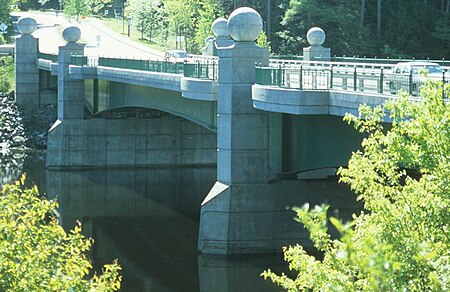Ledyard Bridge
1859 establishments in New Hampshire1859 establishments in VermontAppalachian TrailBeam bridges in the United StatesBridges completed in 1859 ... and 9 more
Bridges completed in 2000Bridges in Grafton County, New HampshireBridges over the Connecticut RiverBuildings and structures in Norwich, VermontFormer toll bridges in New HampshireFormer toll bridges in VermontInterstate vehicle bridges in the United StatesRoad bridges in New HampshireRoad bridges in Vermont

The Ledyard Bridge crosses the Connecticut River to connect Hanover, New Hampshire to Norwich, Vermont. It is the third bridge at this crossing to bear the name of the adventurer John Ledyard.
Excerpt from the Wikipedia article Ledyard Bridge (License: CC BY-SA 3.0, Authors, Images).Ledyard Bridge
West Wheelock Street,
Geographical coordinates (GPS) Address External links Nearby Places Show on map
Geographical coordinates (GPS)
| Latitude | Longitude |
|---|---|
| N 43.703611111111 ° | E -72.299722222222 ° |
Address
Ledyard Bridge
West Wheelock Street
03755
New Hampshire, United States
Open on Google Maps







